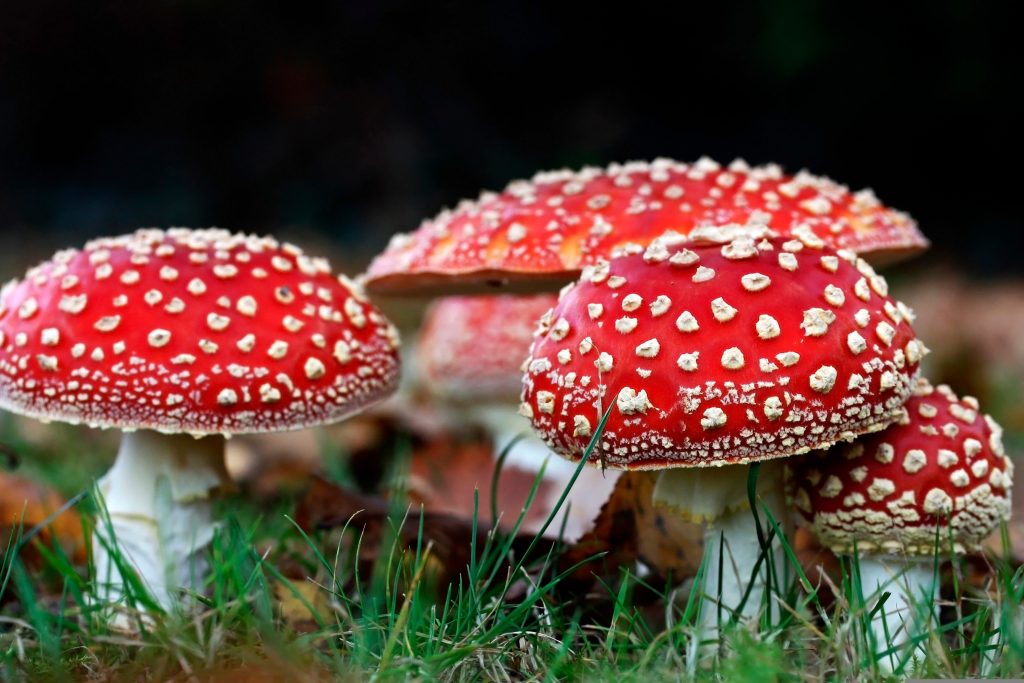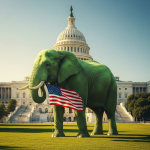
through clinical trials.”
Move Over Psilocybin, A New Shroom is Taking the Spotlight
Forget what you thought you knew about psychedelic mushrooms, because there’s a new player in town. According to a groundbreaking study by researchers at the University of California (UC) San Diego’s Herbert Wertheim School of Public Health and Human Longevity Science, Amanita muscaria mushrooms are quickly gaining popularity in the U.S. based on Google searches.
The study, published in the American Journal of Preventive Medicine on June 10, reveals that Google searches for Amanita muscaria have increased by a whopping 114 percent from 2022 to 2023. The research was conducted by lead author Eric Leas and a team of experts from UC San Diego, including Nora Satybaldiyeva, Wayne Kepner, Kevin H. Yang, Raquel M. Harati, Jamie Corroon, and Matthieu Rouffet.
It seems that each year, more and more people are becoming intrigued by the potential effects of Amanita muscaria. As the study states, “Interest in psilocybin-containing mushrooms is increasing in the U.S., with 12.3% of adults reporting use in 2022, up significantly from 11.4% in 2021. This makes psilocybin-containing mushrooms the most commonly used hallucinogenic substance. This growing interest has also sparked a new market for other types of mushrooms.”
While Amanita muscaria may not be as closely related to psilocybin mushrooms, they still have similar psychotropic effects such as weightlessness, heightened senses, and hallucinations. However, Amanita muscaria mushrooms are known to be slightly more poisonous.
According to UC San Diego Today, the study suggests that people are consuming Amanita muscaria without fully understanding the potential risks. While psilocybin mushrooms have shown promise in therapy, researchers caution that people should approach them with caution and proper knowledge.
One reason for the surge in Amanita muscaria use could be the rise in popularity of psilocybin. “There is a lot of interest in the therapeutic potential for psilocybin and for good reason,” says Eric Leas, Ph.D., M.P.H., assistant professor at UC San Diego. “But at the same time, a growing industry may be trying to capitalize on this interest by marketing other mushrooms. For example, some manufacturers are calling Amanita muscaria products ‘magic mushroom gummies’ and not disclosing what mushroom they contain, or not making it clear that Amanita muscaria is a different mushroom than psilocybin and has essentially no clinical evidence supporting its use as a therapy.”
The psychotropic effects of Amanita muscaria are caused by compounds like muscimol and ibotenic acid, which are its biosynthetic precursors. However, researchers emphasize that these mushrooms have very different effects compared to psilocybin. In fact, Amanita muscaria is a depressant, which sets it apart from psilocybin’s stimulating effects.
“While there may be some potential for Amanita muscaria in pharmaceuticals, muscimol does not have the same effects on the body as psilocybin,” explains Leas. “So it probably would not have the same treatment applications if it ever went through clinical trials.”









